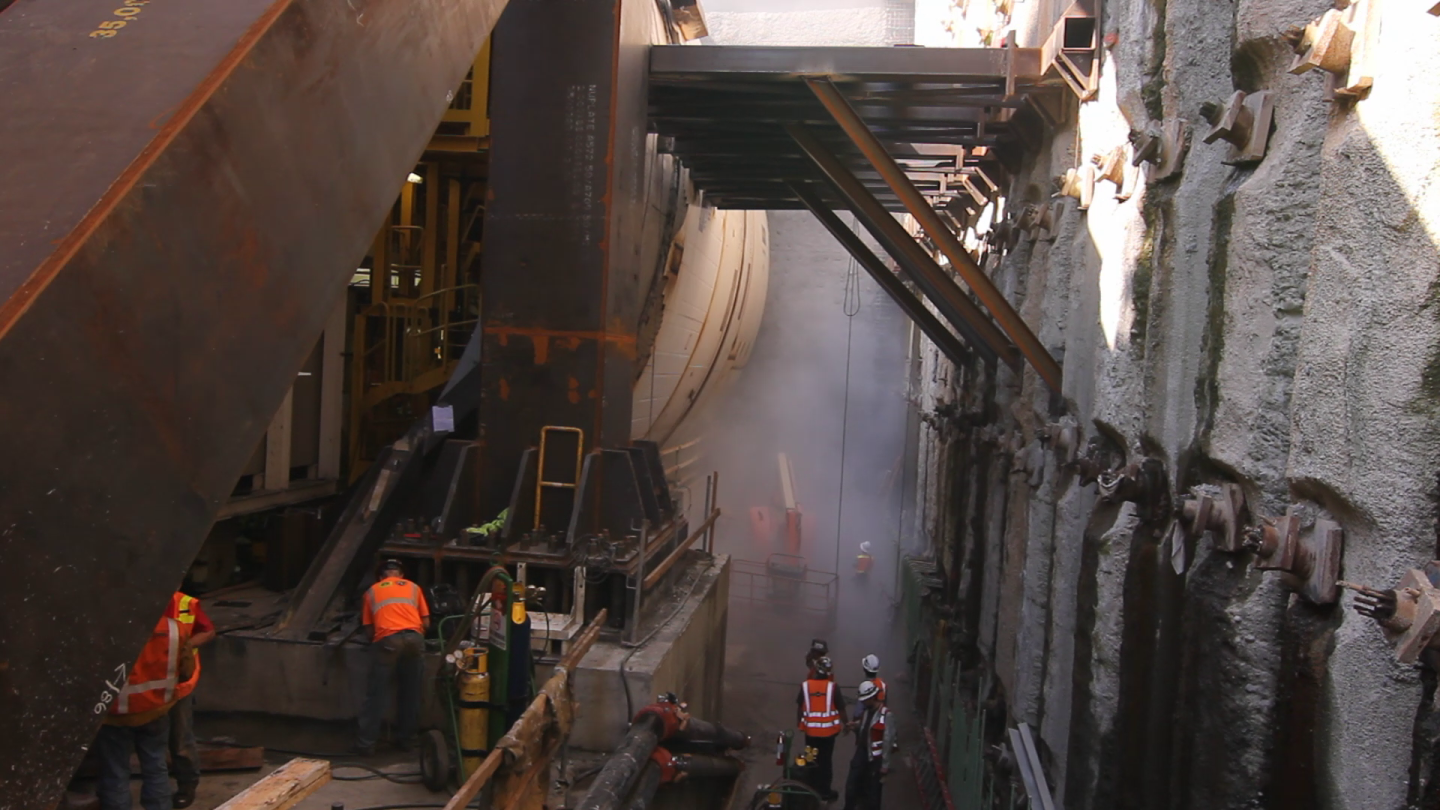Bertha, the world’s largest tunnel boring machine (TBM), started digging under Seattle on Tuesday as it chewed through the north wall of the 80-ft (24.3 m) deep trench where it was assembled after being shipped in pieces from its manufacturer in Japan. Designed to bore a 1.7 mi (2.7 km) tunnel for State Route 99 (SR 99) under the Seattle city center to replace the old viaduct, the machine will both dig out soil and lay a concrete tunnel wall as it goes.
Though Bertha’s construction is one for the record books, it’s only half the story. The other is the SR 99 tunnel itself. The city of Seattle rests on a remarkably geology and the design of both Bertha and the tunnel reflect this. Almost the whole area is one huge glacial redeposit with a complex mixture of soils – some of which is less stable than one would like in an earthquake zone. Furthermore, the city center is heavily built up with the tunnel has to travel under about 160 buildings and the viaduct, which is still in use.
There’s already been a lot of digging in Seattle with the usual cellars, sewage lines, railway tunnels, road tunnels, pedestrian tunnels. And then there’s the famous “underground city” that was buried and built upon after a fire devastated the city in the 19th century. Even before tunneling began, old deposits of fill soils had to be removed and areas strengthened to withstand the passage of the TBM.

The tunneling route is divided into ten zones. The first of these is where Bertha will go slow, only about six feet (1.8) per day, as the engineers monitor the huge machine. One drawback of building something unique for a unique job in a unique location is that it isn't possible to thoroughly test it until it’s actually on the job. As Bertha begins it’s job, the engineers will keep an eye on its workings. There are also three "safe havens” where the crew can crawl forward to inspect the front of the machine. Once the engineers are satisfied, Bertha will speed up until it’s pushing its 326 ft (99.3 m) length at 35 ft (10 m) per day.
“We designed the project so that we would have opportunities to test the machine and make sure she’s functioning properly before we get beneath downtown,” says Linea Laird, WSDOT administrator for the Alaskan Way Viaduct Replacement Program. “If Bertha was learning to ride a bike, this initial section would be her training wheels.”

As Bertha digs beneath the city, it will clear the bottom of the viaduct pilings by 15 ft (4.5 m) and will eventually reach a depth of over 200 ft (61 m) in Zone 7. The machine will pass through areas of such as sand, gravel and one in particular of dense clay requiring soil conditioners to aid the process due to a lack of groundwater. Eventually, it will pass under a railway tunnel dating from 1904, a major sewer line, the Battery Street Tunnel, where SR 99 currently runs, and even under the foundations of Seattle’s famous monorail.
In 14 months, the SR 99 tunnel will breach the surface near the intersection of Sixth Avenue North and Harrison Street and the new highway section is scheduled to open in 2015.
The video below shows the cutting head being tested earlier in July.
Source: WSDOT


















